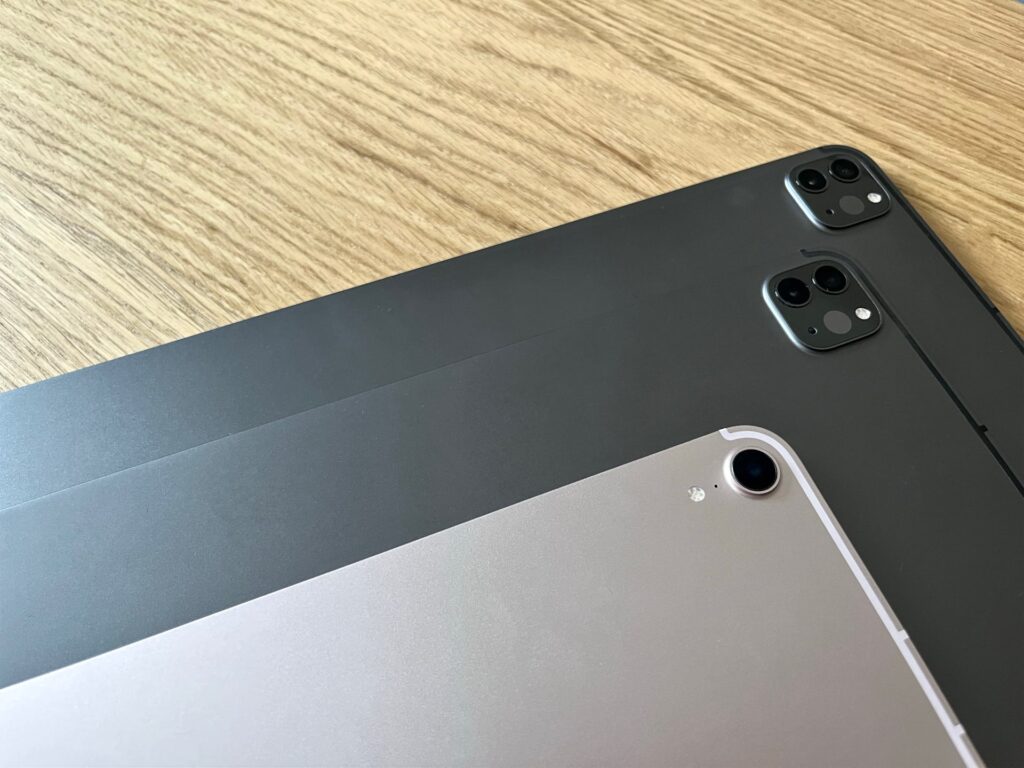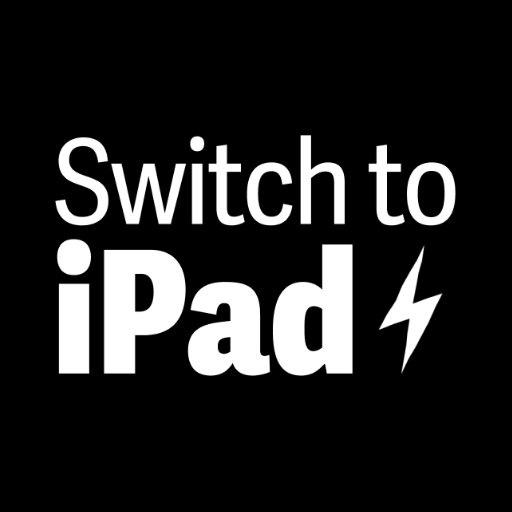🆓 This member post is free for all, thanks to our paying subscribers. Enjoy!
Hi!
How’s your eyesight? Mine’s good, although I have invested in blue light-blocking glasses for work, with slight magnification. I find it relaxes the eyes a bit, or maybe it’s the placebo effect. It matters little.
I’m typing this on my 11” iPad Pro, sat in its Magic Keyboard. The keyboard’s a bit cramped, as mentioned previously, but it gets the job done. The screen size is large enough for most tasks, the middle ground of iPads, you might say.
However, the release of the M1 iPad Air (10.9”), the iPad mini 6 (8.3”), which I love, and the fact that I’m using Universal Control rather than Sidecar with my Macs, has made me think about iPad screen sizes again. This, obviously, means that I have to share said thoughts with you, so here we are.
Sidecar vs. Universal Control
With Sidecar, which lets your iPad act as an additional screen for your Mac, the screen size definitely matters. The bigger, the better, for sure, so the 12.9” iPad Pro is what you want if you want to extend your Mac with an iPad screen. It’s common sense, really – if size didn’t matter, why would you want an extra screen anyway? But also: macOS isn’t designed for 7” screens, the smallest Mac that’s on sale today has a 13.3” screen. That’s more than the biggest iPad.
Meanwhile, Universal Control takes another approach to connecting the Mac with the iPad. It’s a bridge between the two that lets you drag and drop files between them, and use the same keyboard and mouse seamlessly. I wrote about this in the last issue, so do check that out if you haven’t already.
So, to sum up: Universal Control gives you the same experience on your iPad as you’re used to, whereas Sidecar is a Mac extension on your iPad. This matters because if you’re used to, and perfectly fine with, an iPad mini with a keyboard and trackpad, then the screen size is perfectly fine, too. Most of us won’t say the same for using the iPad mini in Sidecar, although it can obviously be done, and useful, depending on what you’re after.
The case for a larger iPad
People evangelizing the iPad as the prime computing platform tend to argue for a larger iPad. We’re not talking storage here, but screen size several inches larger than the current 12.9” iPad Pro. And, sure, I can see how a 15” would be useful, but I’d be surprised if it were in the cards. It’s niche, at least if Apple intends to keep the Mac as the pro device, and the iPad as a marginalized one. Still, there’s no doubt that there are artists using the iPad as their primary device, rather than drawing tablets from Wacom. Apple surely sees this.
Personally, I’d love a larger iPad Pro. I don’t see it being my primary device, though, but rather something that’s fairly stationary in terms of where I use it. It’d sit on my desk, I’d bring it to the couch, to the table, but the sheer bulkiness of such a device makes it a less interesting proposition for me. Now, that all changes if and when Apple starts shipping foldable displays, but we’re not quite there yet.
Looking at today’s offering, the 12.9” screen of the largest iPad (Pro) is substantial, often oversized, when in tablet mode, but not at all when you use the iPad as a laptop. This is a device that thrives for drawing and designing, and for editing photos when in tablet mode. It’s a size for artists and creators, and for those of us who want more space when in laptop mode.
Stepping down, 11” iPad Pro and the new iPad Air, hit the sweet spot for many in tablet mode. It’s not unwieldy for reading, yet large enough to work for note-taking and drawing. It works well enough for most tasks in laptop mode, although you typically miss out on a pane. Furthermore, it’s smaller, it makes sense.
The two sizes left, the default iPad (10.2”) and the iPad mini (8.3”), work well for tablet consumption, but less well for creation. It works, but it’s limited. As for laptop mode, most of us will agree that these screen sizes are suboptimal for anything but the lightest, most focused tasks. Incidentally, I’m performing one now: Writing, so it may very well be a good fit for your needs despite this.

Where I’m at, currently
I’ve got access to most iPad models, including both M1 iPad Pros, and the new iPad mini. I love the latter for reading and gaming, but that’s where it stops, these days. It was my note-taking iPad when I attended class (a different story), and it surely works for this, but I tend to get a bit advanced with my notes. In the end, I missed the screen refresh rate, which makes drawing with the Apple Pencil smoother. The best iPad for note-taking and drawing is undoubtedly the 12.9” iPad Pro, but I prefer not to lug that around when I’m out and about. So, it’s the 11” iPad Pro for me, currently. Again, see my Easter travel kit for some thoughts on this. Being able to throw the iPad in a small bag is something I appreciate, it’s that simple. I still use the 12.9” iPad Pro at the office, though. It’s become stationary in use, much like an even larger iPad surely would.
I’ll say this, though: The 11” Magic Keyboard, while serviceable, isn’t great for long writing sessions. If I relied on this solely, I’d assume wrist pain would be in the books.
Picking the right iPad is hard, there are many factors at play. Screen size is the one I worry about the most. Now that we’re looking at spring, and a pandemic that’s calming down a bit (for now), I hope to be a bit more mobile. I want my iPad to be that, too. Pair that with Universal Control rather than Sidecar, and you can probably understand why I ended up using the 11” iPad Pro as my daily driver.
What’s yours, and why? @ me!

